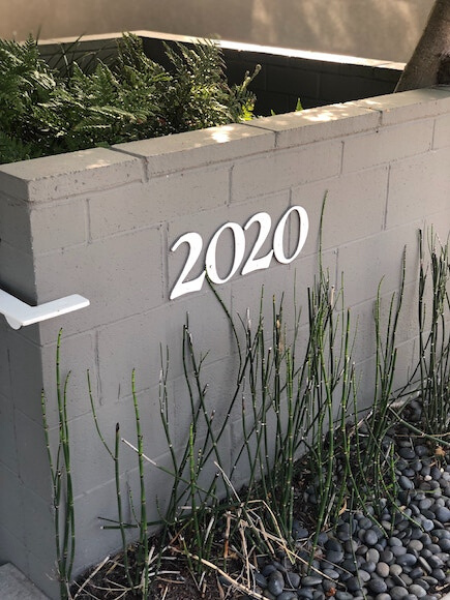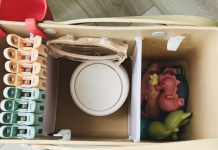 Your Future’s So Bright, You Gotta Wear Shades
Your Future’s So Bright, You Gotta Wear Shades
Forget your 2020 New Year’s Resolutions—they’re coming true! No, you are not dreaming or being indoctrinated into Oprah’s book club to re-read, The Secret. Research shows visualizations and affirmations can help make the positive changes you want to see in your life. However, maintaining them is another story. According to a study in 2014, only 8% of people who set out to achieve their New Year’s goals, actually make them. Only 64% stick it out past one month, 46% past six months, and 8% through the end to long-term achievement.
Don’t fret; the year has only just begun! Hopefully, these psychologically sound goal-setting tools can help.
Scientifically Woo-woo Solutions?
I vented to my sage esthetician during a routine threading. While painfully pulling hairs from my eyebrows, she reminded me of the truth.
“That which you give your attention to expands,” she said.
She expounded on the laws of attraction and how our subconscious mind can learn to accept our patterns of thinking. This causes a change for better or worse in our long-term mindset. This affects our beliefs, feelings, and habits. It’s like gardening. If you offer plants sun and water, (maybe even talk nicely to them) they will grow.
Planting Seeds
Negative thoughts can grow like weeds and stifle the growth of our desired plants (or goals) if we let them. When we notice something spouting in our garden that we do not want, or something that needs changing, we need to remove it, just as we would pull unwanted weeds.
Fertilize Your Future
Scientific literature supports that the same brain regions are activated when we visualize an action and when we actually perform it. We know that athletes use detailed imagery and visualizations to prepare before events. However, there’s more to it than using imagination and reciting positive phrases to ensure long-term change. It takes strong intentions behind your miracle grow to keep the flowers blooming in 2020.
We begin to grow with these foundational bedrocks
When creating visualizations:
1. Set your goal starting with something fairly easy. Put it all on paper.
2. Create a clear idea or picture (thinking of it in the present, existing how you want it).
3. Focus on it often (in a relaxed way).
4. Give it positive energy (imagine it coming to you, see yourself achieving it).
When creating affirmations:
1. Phrase affirmations in the present tense, not in the future. Ex. I now have a new job.
2. Phrase affirmations positively. Speak of what you do want, not what you don’t.
3. Keep affirmations short and simple.
4. Choose what feels right to you and what you want (not what someone wants for you).
5. Take an attitude of acceptance for what is (including unpleasant situations or feelings), while taking every opportunity to begin creating what will make you happiest.
6. Believe your affirmations to be true. Ex. I am actively taking steps to . . . .
 Weathering the Storm in 2020
Weathering the Storm in 2020
Some cynics might ask, what if my toddler wreaks havoc in my metaphorical flowerbed? #$%^ happens! You’re right, positive thinking alone doesn’t stand a chance! Gabriele Oettingen, a researcher on human motivation, reveals why conventional wisdom falls short. On her website, she lays out how to WOOP (Wish, Outcome, Obstacle, Plan) your life into shape, not to be confused with Whoomp. Oettingen uses a four-step process, incorporating mental contrasting and if-then planning to create a particularly potent habit-fighting fertilizer.
Use Deets, Not Deet
W
First, you must pick an obtainable wish or something you would like to change or cultivate in your life. Mental contrasting, in a nutshell, involves thinking positively about how it will be when you achieve your goal while thinking realistically about what it will take to get there.
The three W’s can help break this down. W x 3: What is your goal? When will you achieve it? Why is it important?
O
Second, imagine how you will feel attaining your goal (can you feel the pride, relief, or happiness that comes from achieving it?) Mental contrasting turns wishes and daydreams into reality, by bringing into focus what you will need to do to make it happen.
O
Now, step three. What stands in your way? Are there too many goals, are you distracted, did you forget your goal? Sometimes we “miss” opportunities because we are reluctant to take the necessary steps to reach our goal, especially when it’s too daunting.
P
And lastly, an if-then plan or implementation intention. Start with taking a goal you want to achieve and then spelling out exactly when, where, and how you will achieve it. Ex. If I am in __ (situation), then I will __ (take this action). Basically, it’s like problem-solving for relapse prevention. Ex. If trying to cut back on emotional eating, you plan to keep a food diary to mindfully think before devouring that extra serving of chips. Or, perhaps, you’ve already thought of replacing chips for fruit.
A New Year’s Resolution to Survive, Embracing the Mess!
Mama’s be compassionate with yourself while exploring and setting goals in 2020. Consider a gratitude journal to help you focus on the positive you already have in your life (rather than what you feel you lack). Trust your worthiness in achieving your goal. Share your vision with a trusted person for added accountability. Track on your progress regularly. Create a short mantra for your goal that can serve as your daily reminder. Hold the vision and trust the process.
You can’t force the outcome, just plant the seeds and watch your intentions bloom when the time is right.













